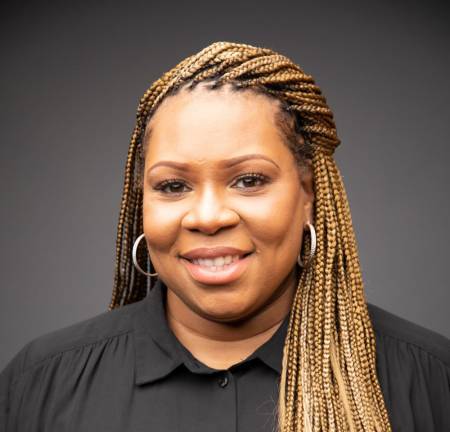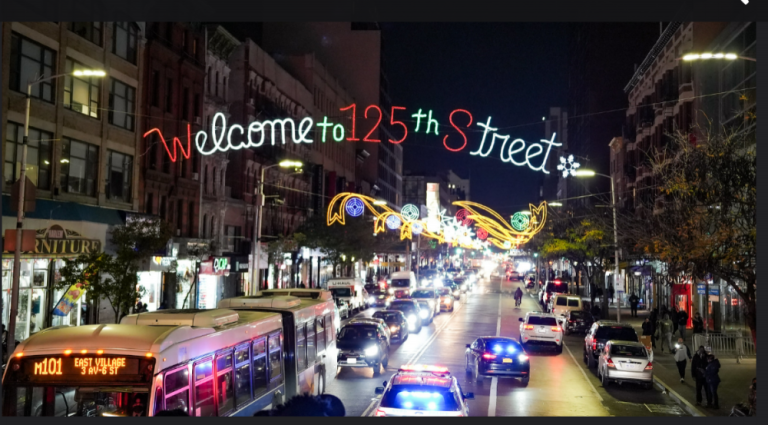Career Social Worker Scores Honor as A Grand Marshal of Harlem Holiday Lights Fest
Dr. Lena Green is one of the two grand marshals of the Harlem Holiday Lights Festival an honor tied to her work as executive director of the HOPE Center Harlem and a lifetime of social work. She tells us how her career evolved.


Harlem native Dr. Lena Green tells us that growing up in Harlem influenced her decision to become a social worker. “I just saw a lot of drug use, depression, anxiety and challenges around social and emotional well-being,” she said.
This led her to volunteer at the Upper Manhattan Mental Health Center, where she saw firsthand the worthwhile work its social workers were doing. She realized that was her calling, and went on to earn a master’s in social work and a doctorate in clinical social work at New York University.
She had a 20-year stint working in city government, where she served at the Manhattan District Attorney’s office in their counseling department and then the Department of Health, in the Bureau of Maternal, Infant and Reproductive Health. This is her third year as the executive director of the HOPE Center Harlem, a community-based mental health clinic connected to the First Corinthian Baptist Church, where she’s been a parishioner since 2006.
In 2019, she was honored with the National Association of Social Workers New York City Chapter’s Social Work I.M.P.A.C.T. Award, given to a social worker who “exemplifies the commitment to social justice, equity, empowerment, and civil rights.”
This year, she was selected by the 125th Street Business Improvement District as one of the Grand Marshalls of its Harlem Holiday Lights, which is celebrating its 30th anniversary. The spirited event, featuring New York City’s only parade of lights, will be held on Nov. 14th. Dr. Green is sharing the Grand Marshal honors with Stephanie Pacheco, NYS Youth Poet Laureate and member of the 2022 NYC Youth Slam Team. “For more than 30 years, Harlem Holiday Lights has evolved into a community-wide holiday celebration that represents the historical and cultural flavors of our neighborhood,” said Barbara Askins, President and CEO of the 125th St. BID. The theme this year is: “Celebrating Our Youth.”
“I am just delighted and really honored that they chose me. And then to have the theme this year be focusing in on youth means a great deal to me,” said Green, who created two youth-centered programs, one focusing on suicide prevention and resiliency and another, on using the art of photography as an outlet. “Especially because these past two years, I’ve been really thinking about how to serve the youth of Harlem, so it just seems like great timing.”
Where did you grow up?
Well, that’s an easy one. I’m a native New Yorker and I was born right here in what I like to call “the Village of Harlem.”
When did you know that you wanted to pursue social work?
I majored in psychology as an undergrad at the University of Massachusetts at Amherst and it was very clear that I really wanted to focus on mental health. So I started volunteering at the Upper Manhattan Mental Health Center. I volunteered there for about a year and while I was there, I assumed that everyone that I was working with initially, I assumed that they were all doctors. They were doing great work, so I got to run some small groups and assisted in some of the cases involving child services. And we were all sitting in a meeting one day and everyone was saying how their cases were going and I said, “I have a question. If you all can tell me, what was your path to becoming a doctor?” They all sort of had this chuckle and said, “We’re all social workers.” And in that moment, I was like, “Wow, ok, it is very clear the kind of work that I want to do.”
Explain what the HOPE Center provides.
We provide evidence-based mental health services, individual treatment, group-based treatment. We have what we call our community facing events that involve our healing conversations that focus on various mental health topics or therapeutic topics. We also host events here. We also are a field practicum site, and what that means is that it’s also the training ground for mental health clinicians in various professions. We mostly focus on the big three which are considered social worker, psychologist and psychiatrist. We also have a psychiatry partnership with Mount Sinai Hospital and we have two psychiatrists on staff with us right now. The majority of folks who are here are social workers, we also have mental health coaches and also have a strong relationship with the church as it relates to training and referrals of our faith leaders.
How did your role as executive director there come about?
I’ve been a member of First Corinthian Baptist Church since 2006 and I’ve worked in ministry there in various capacities over the years. Our pastor, Pastor Mike Walrond, was aware that I was a mental health clinician and during the pandemic, he gave me and call and said, “Are you sitting down?” And I said, “I’m a mental health clinician. There’s really nothing that you’re going to say to me that’s gonna knock me over.” And he was like, “I would like to offer you the position as the executive director of the HOPE Center.” So I laughed and said, “Let me sit down.”
When I started to think and pray about it, I started to think about all the things that were on my heart that I had said that I wanted to do. And the things that I said I wanted to do was that I wanted to work in the community. I wanted to greatly impact marginalized populations and change the face of mental health and have the opportunity to address stigma, especially in communities of color. And I also knew that people were suffering and when I thought about things like the increased suicide numbers among black youth, those are things that were increasingly paining me and my experience. So I said, “This is an opportunity to address that and what better way to do that than through a faith-based institution, because that’s where folks are already going.”
What are the best and hardest parts of your job?
The best part of my job is knowing we are increasing access to mental health care for folks who would not otherwise even think through or think about getting it, so we are addressing stigma. We are getting people in the door for the first time as even older adults. We are changing the face of what people think mental health clinicians are. I put together an incredibly diverse team that is reflective of the community that we serve. We’ve been able to create some magnificent partnerships with some organizations and universities across the city. The most challenging part is that we don’t have enough funding to be able to do the kind of things that we want to do. We have long waiting lists. During the pandemic, people were waiting for over a year, or even right now, people at a minimum are waiting three to four months for services, especially now when the holidays are coming. So at any given time, we usually have anywhere between 50 and 70 people on the waiting list. Those are the things that keep me up at night.
I saw on your LinkedIn profile it said that you are a “fatherhood practitioner.” What is that?
I’ve done a lot of training, talks and advocacy supporting dads. And that came about because when I used to work for the Department of Health, we did a lot of programming focusing on moms and babies and it was really frustrating for me that we weren’t father inclusive. My thought was if you’re serving the family, then you have to be father inclusive. So I started getting more training in father-inclusive treatments, working with various programs across the city, specifically focusing on serving fathers.
To learn more about the HOPE Center of Harlem, visit www.hopecenterharlem.org
For more information on Harlem Holiday Lights, visit www.harlemlightitup.com